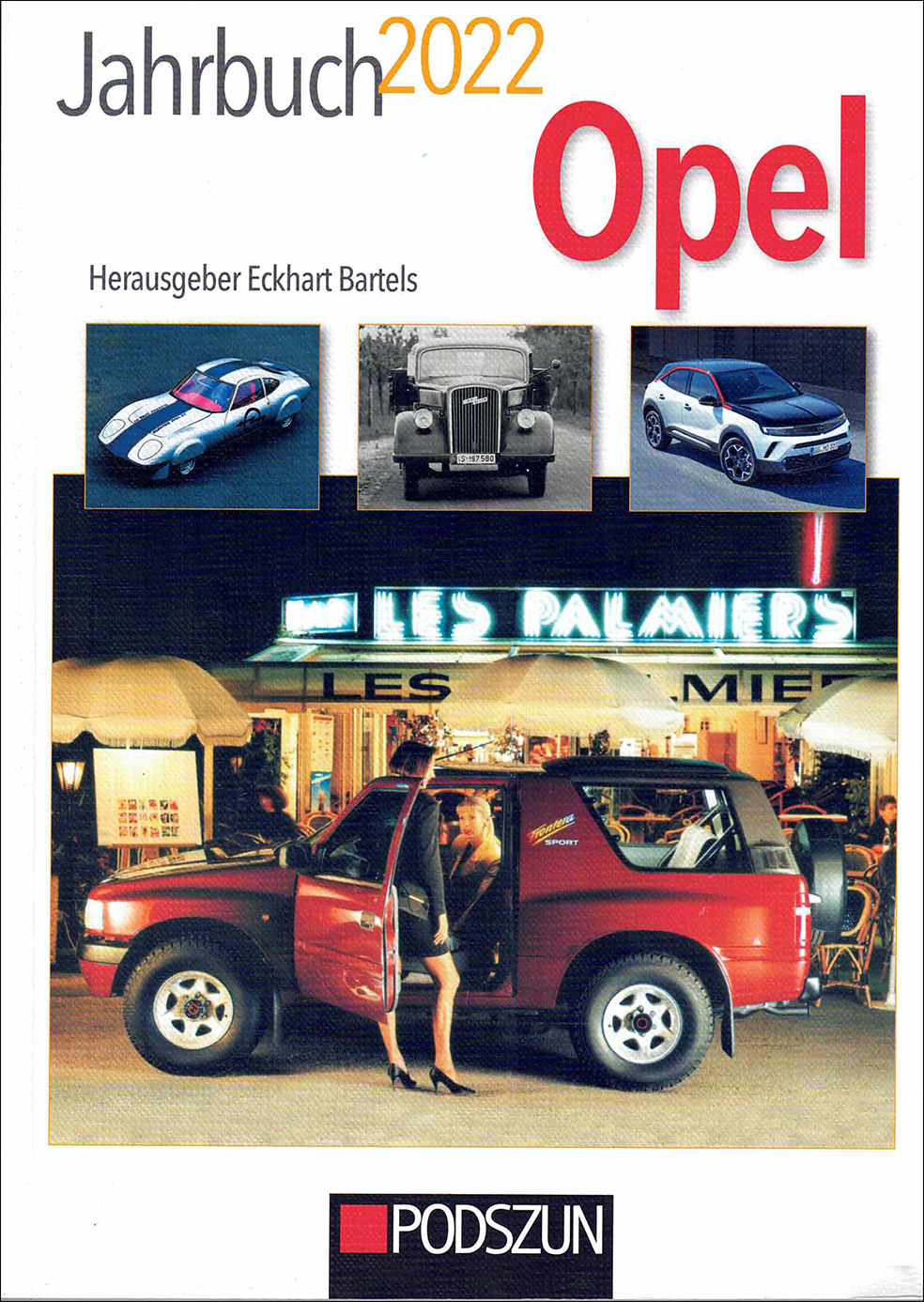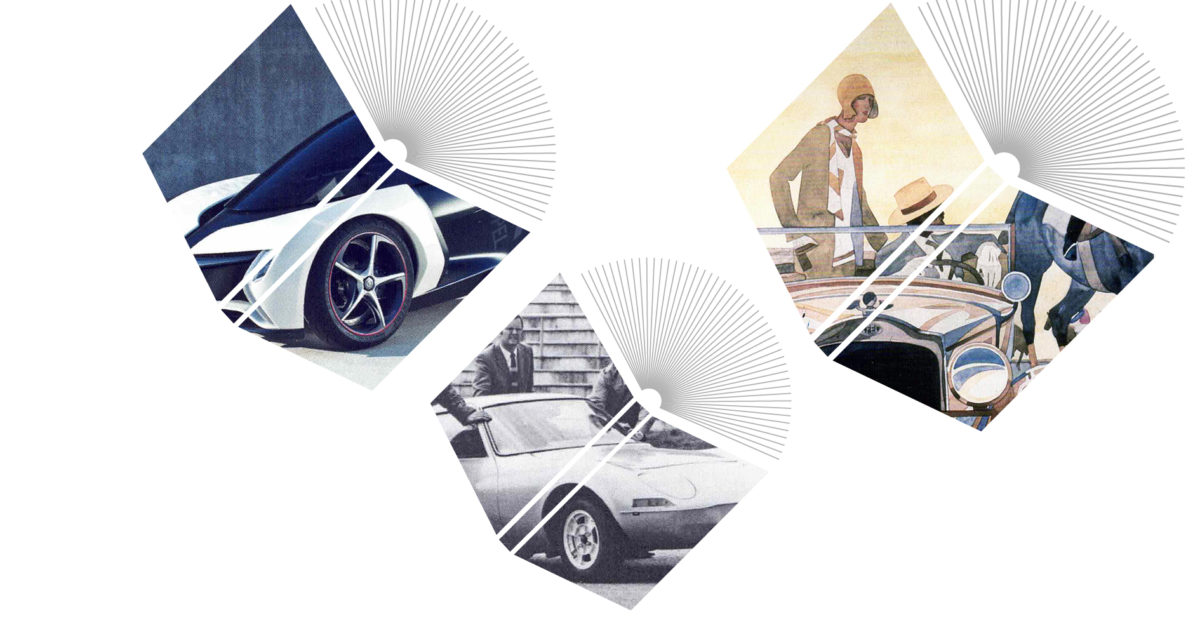
The „Motorzweirad“ is 120 years old, the six-cylinder 95, the diesel 50 – behind every number there is an exciting Opel story. And no one knows how to tell it better than Opel connoisseur Eckhart Bartels (photo centre). Together with Torsten Schelper (left) and Dr. Thomas Dieckmann (right), he has compiled a wealth of material for the „Opel Yearbook 2022“, which will bring back many a memory for friends of the Blitz, but will also reveal previously undiscovered facts. The volume is a musthave for every Opel fan. As a foretaste, we have taken a brief stroll through the 144 pages.
160 Years of Opel:
History of a trademark
In an oval, in a circle, in an eye or with wings: The constant in the Opel logo is change. For the 50th anniversary of the company in 1912, Ludwig, the youngest of the Opel sons, tried his hand at an overview of all the different visualisations. Since then, many more have been added. And even the lightning bolt, which became a permanent trademark in the 1960s, changed its shape over the decades.

On two wheels
with light engine
Opel built bicycles. And great motorbikes – the legendary „Motoclub 500“ with its red tyres, for example. But do you know „motor two-wheelers“? From 1902, 120 years ago, Adam Opel’s sons tried their hand at light motorised two-wheelers. After sewing machines, bicycles and automobile production, which was still in its infancy, they were to form the fourth product line. Only one person could be considered as a guest author for this story by the yearbook editors: Opel two-wheeler expert Jürgen Nöll.
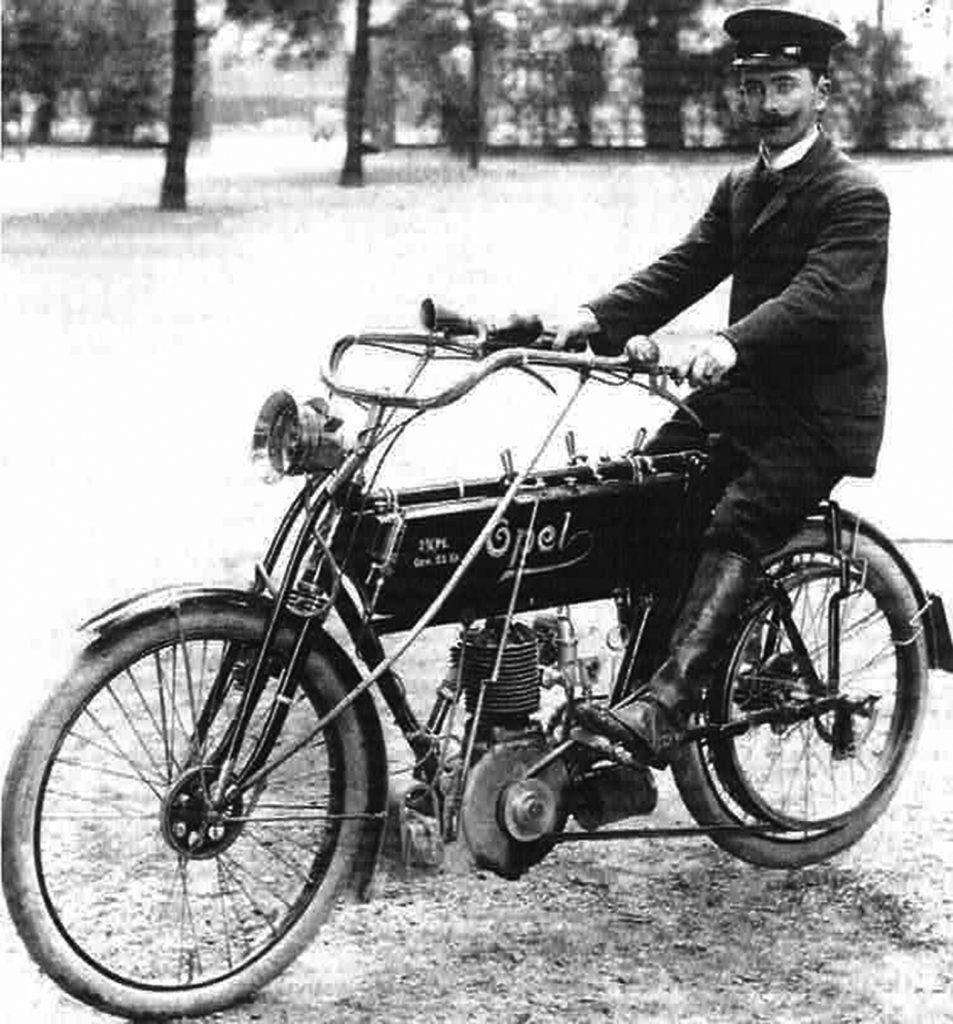
Technology that inspires – and
and electrifies. For 50 years now.
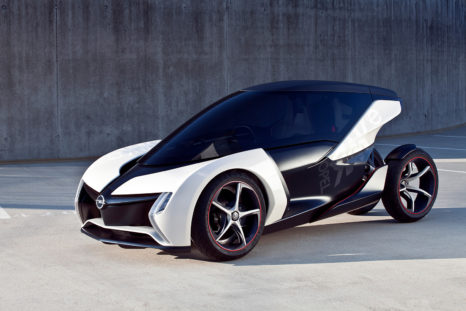
The future is electric – but the past has also been exciting in many respects, especially when it comes to e-drives. In their article, Dr Thomas Dieckmann and Torsten Schelper review the history of electric mobility. They remind us, for example, that even at the birth of the automobile it was completely open for a long time which type of drive would prevail. In addition to petrol-driven carriages, experiments with steam-driven engines were also quite promising. And a Belgian by the name of Camille Jenatzy, who with his „La Jamais Contente“ („The Never Satisfied“) entered the race in 1899 with an electric car that was already capable of 105 km/h, when the Opel patent motor car Lutzmann could only manage 40 km/h at best. However, with the start of mass production of the Ford Model T in 1908, the internal combustion engine prevailed.
And Opel? It has the lightning bolt in its emblem. It stands for electricity. Which is therefore also to be understood as an obligation. With his electric GT (photo right), Georg von Opel demonstrated 50 years ago what is possible with a battery drive. The first „practical“ electric car from Rüsselsheim was the „Impuls I“, which Opel presented in 1990, but which remained an experimental vehicle. There were several of these in the following years, such as the HydroGen series, which experimented with fuel cell drives. In addition, there were exciting studies such as the „Flextreme GT/E“ or the „Opel RAK e“ (photo above). The first official e-car was the Opel Ampera, which was launched in 2011.
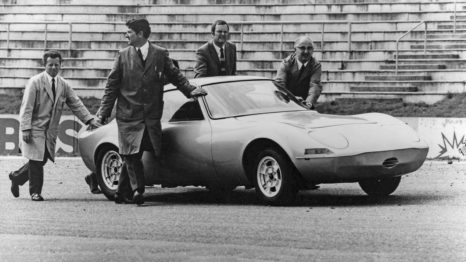
The Opel Yearbook 2022 (ISBN: 9783751610261) is published by Podszun-Verlag, costs €16.90 and has 144 pages. It is available in bookshops or directly from the publisher.
